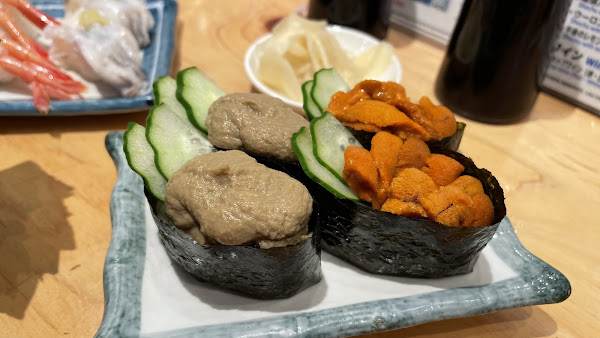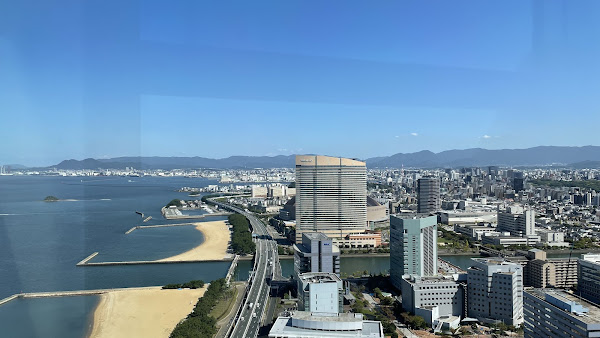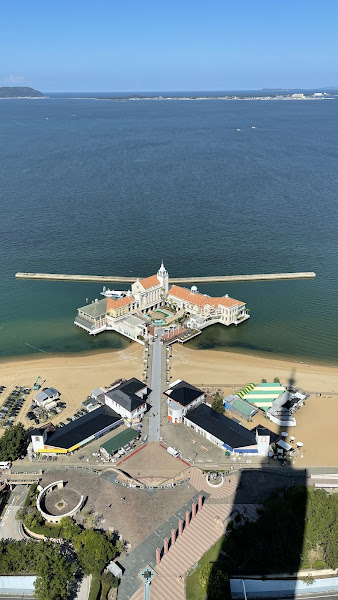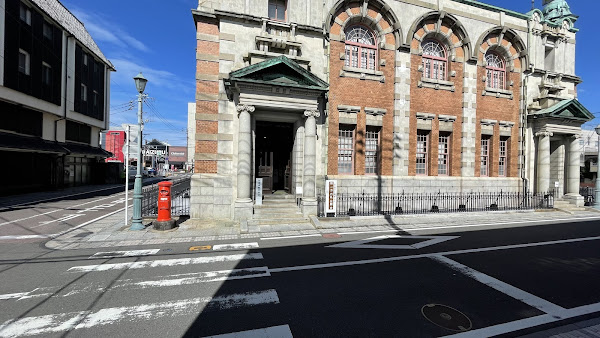24 hours and 50 minutes took us from the hotel to home in Berlin door-to-door. The flights were smoot, but nevertheless intresting. From Fukuoka to Haneda there are over 70 flights daily. JAL is using a 767 wide-body jet for this short flight.
Our flight from Haneda to Helsinki was an interesting one. Since the Russian aerospace is closed for EU airlines we went the polar route. We took off at 10pm, total darkness. We flew east - north-east and used the tight corridor between Russia and Alaska, so it became daylight very fast. Then crossing the North Pole and flying south resulted in a night again.
After a couple of hours ot was daylight again (since we travelled east and north) went over the north pole and approached Scandinavia from the north landing in Helsinki after 12 hours and 30 mintues. FinnAir presented us with the following "diploma":
Nice marketing move.
Based on these calculations we were apx. 165.68 km from the North Pole.
Sunday, October 13, 2024
Saturday, October 12, 2024
Ohori Park and Old Town Hakata
We are leaving Japan today going home. But we still had half a day left in Fukuoka, so we visited the Ohori Park, which is built around a huge pond in the middle of the city. In the pond there are three islands connected to each other with bridges. Groves of pines and willows give the necessary shade in the 30 degrees sunny weather.
After the park we checked out Hakata old town hosting the Sōfuku-ji Zen Temple. Originally the temple was established in Dazaifu in 1240, but was later moved to its present location in the 17th century. We couldn't enter the buildings, but did meander outside and took some shots.
Today Fukuoka --> Tokyo (Haneda) --> Helsinki --> Berlin.
After the park we checked out Hakata old town hosting the Sōfuku-ji Zen Temple. Originally the temple was established in Dazaifu in 1240, but was later moved to its present location in the 17th century. We couldn't enter the buildings, but did meander outside and took some shots.
Today Fukuoka --> Tokyo (Haneda) --> Helsinki --> Berlin.
The Hanko culture
Hanko is the Japanese stamp people are using everywhere. Everything is stamped. Visiting a mansion? Going for breakfast with a prepaid voucher? Getting a specialty ticket to somwhere? Get it stamped!
The stamping culture is deeply rooted here in the tradition. Every person, every family has their own Hanko. Hankos are registered at the Hanko registry. Hankos are stored in vaults, are locked up in secure places to prevent theft.
Hankos are unique and intricately designed stamps.
The Kitano Ijinkan stamp from the Yamate 8-Bankan house:
The Hanko from the Lion House:
Sometime it feels like this is an artificial connection of people to the traditional past. Doesn't take too much to demonstrate how you care about your own tradition, just create a beautiful Hanko and use it. Obviously Hankos are today considered as unsecure, easily forged tools. In the era of asymmetric cryptography, digital signatures, 2-factor authentication, etc., hankos still play a big role. I'd even say that there is a whole technological backend supporting the usage of these traditional manners instead of replacing them with modern architecture.
Whenever I see a long queue there are 3 options: Either it's for udon/soba/ramen, or for a pop-up sweet shop that sell only 60 instances of a matcha-pumpkin layerd doughnu and the third option is of course to get a stamp to the collection.
Here is a hanko shop window where you can personalize your hanko:
A stamping station on top of the Fukuoka Tower:
Happy stamping!
A stamping station on top of the Fukuoka Tower:
Happy stamping!
Do you speak Engrish?
Translation of short texts from Japanese to English sometimes results in funny texts. It's not difficult to pinpoint them on the streets.
Don't move! Or don't move the object?
Don't even think about licking it. I tried to find a bike to wheel (?) but couldn't... and next time I'll try to slip with caution. Very important.
Don't even think about licking it. I tried to find a bike to wheel (?) but couldn't... and next time I'll try to slip with caution. Very important.
Friday, October 11, 2024
Fukuoka Museum of Asian Art
This museum we visited today is dedicated to pan-Asian contemporary art. We visited the permanent exhibition, which had a true diversity of artists from very different parts of Asia representing very different cultures and problems and inspiration. From Japanese Manga through the status of the women in Muslim countries, and the terror of the Pol-Pot in Cambodia.
Fukuoka Tower
This impressive tower has an incredible observation desk 123 meters above ground. Luckily we didn't bump into SpaceGodzilla.
Thursday, October 10, 2024
A day-trip to Karatsu
Today we did a day-trip to Karatsu, a small town located west of Fukuoka. We took our subway line, which at its final stop transformed into a JR train and just continued to travel our direction after changing the crew. Karatsu is in Saga Prefecture on the seashore:
Karatsu is a small town, quite rural, but rural rich. We could see a huge difference between Shikoku and Kyushu islands in terms of wealth. Our first stop was the Former Karatsu Bank building. Its construction was overseen by Kingo Tatsuno, who was a native of Karatsu, and the former Karatsu Bank is his only work remaining in his hometown. Kingo Tatsuno was an architect known for designing such buildings as Tokyo Station and the Bank of Japan. The former Karatsu Bank was designed by one of his apprentices, Minoru Tanaka. Built-in 1912 in the Queen Anne style, its elegant design is a symbol of the prosperity brought by the Karatsu coal mines. This is a counter originally used as a teller’s window:
The building from the outside:
The Karatsu Castle was built on a small hill facing the ocean as well as the Matsuura River. We climbed to the top or course to enjoy the view and the ocean breeze.
The castle from afar:
We took a long walk in the pine grove that was planted 400 years ago with the intention to stop the wind. Very good walk, with occasional views to the sea:
The windy seashore:
Karatsu is a small town, quite rural, but rural rich. We could see a huge difference between Shikoku and Kyushu islands in terms of wealth. Our first stop was the Former Karatsu Bank building. Its construction was overseen by Kingo Tatsuno, who was a native of Karatsu, and the former Karatsu Bank is his only work remaining in his hometown. Kingo Tatsuno was an architect known for designing such buildings as Tokyo Station and the Bank of Japan. The former Karatsu Bank was designed by one of his apprentices, Minoru Tanaka. Built-in 1912 in the Queen Anne style, its elegant design is a symbol of the prosperity brought by the Karatsu coal mines. This is a counter originally used as a teller’s window:
The building from the outside:
The Karatsu Castle was built on a small hill facing the ocean as well as the Matsuura River. We climbed to the top or course to enjoy the view and the ocean breeze.
The castle from afar:
We took a long walk in the pine grove that was planted 400 years ago with the intention to stop the wind. Very good walk, with occasional views to the sea:
The windy seashore:
Subscribe to:
Comments (Atom)





























































